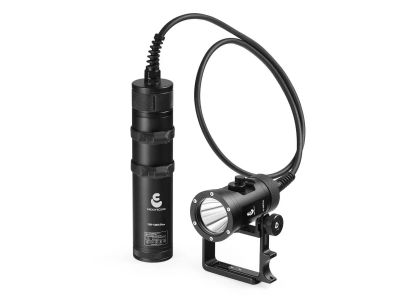
Cave diving is considered extremely challenging due to several factors:
Restricted Space: Cave systems often have narrow passages and tight spaces, requiring divers to navigate through confined areas. This can be mentally and physically demanding, as divers need to be comfortable in tight spaces and maintain control in potentially disorienting environments.
Limited Visibility: Water inside caves is typically murky, leading to poor visibility. This makes it difficult for divers to see potential hazards, such as rocks, obstacles, or changes in the cave structure. Maintaining orientation and avoiding entanglement or collisions becomes crucial.
Complex Navigation: Cave systems with multiple interconnected passages can be extensive and labyrinthine,
Divers must possess advanced navigation skills and be able to accurately navigate in three dimensions using guidelines, markers, and mental maps. Losing one's way in a cave can have serious consequences.
Depth and Decompression: Cave diving can involve significant depths, which may require decompression stops during ascent to allow the body to safely eliminate accumulated nitrogen. Proper training and equipment for decompression diving are essential to avoid the risk of decompression sickness or other diving-related injuries.
Potential Hazards: Cave environments pose unique risks, such as overhead environments, the potential for entanglement in lines, limited access to the surface, and challenging emergency procedures. Divers must be well-prepared and have specialized training to handle these situations.
Regarding good diving sites for cave diving, there are several renowned locations around the world. Some notable ones include:
Sistema Sac Actun, Mexico: Located in the Yucatan Peninsula, this is the longest underwater cave system in the world, offering a diverse range of passages and stunning geological formations.
Ginnie Springs, Florida, USA: This popular cave diving destination features crystal-clear water and numerous interconnected caves, such as Devil's Eye, Devil's Ear, and the Ballroom.
Cenotes, Mexico: The Yucatan Peninsula is known for its cenotes, natural sinkholes filled with freshwater that provide access to intricate cave networks. Dos Ojos and The Pit are well-known sites.
Wookey Hole, England: Located in Somerset, Wookey Hole offers an extensive cave system with unique geological features, including underground rivers and large chambers.
Mount Gambier, Australia: The area around Mount Gambier in South Australia is renowned for its sinkholes and cave diving opportunities. The Piccaninnie Ponds and the Ewens Ponds are popular sites.
Sistema Dos Ojos, Mexico: Translated as "Two Eyes," this cave system is famous for its crystal-clear water and stunning underwater formations. It offers a range of dives suitable for different skill levels.
Remember that cave diving requires specialized training and equipment due to its inherent risks. It's crucial to have proper certification, experience, and the guidance of a qualified cave diving instructor when exploring these sites.